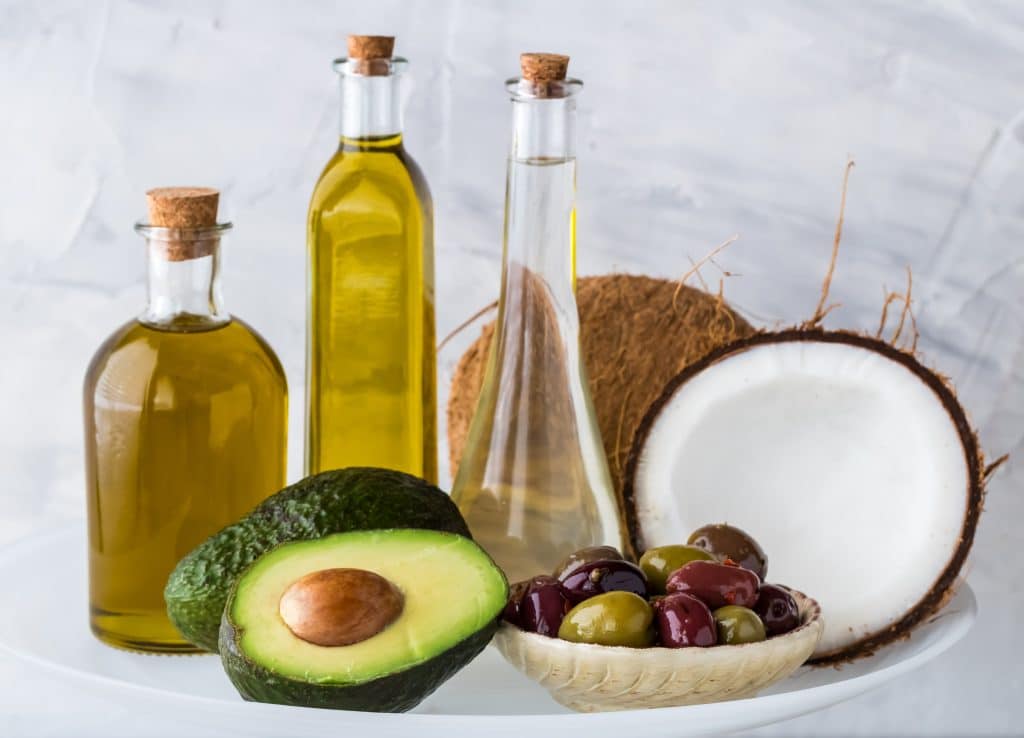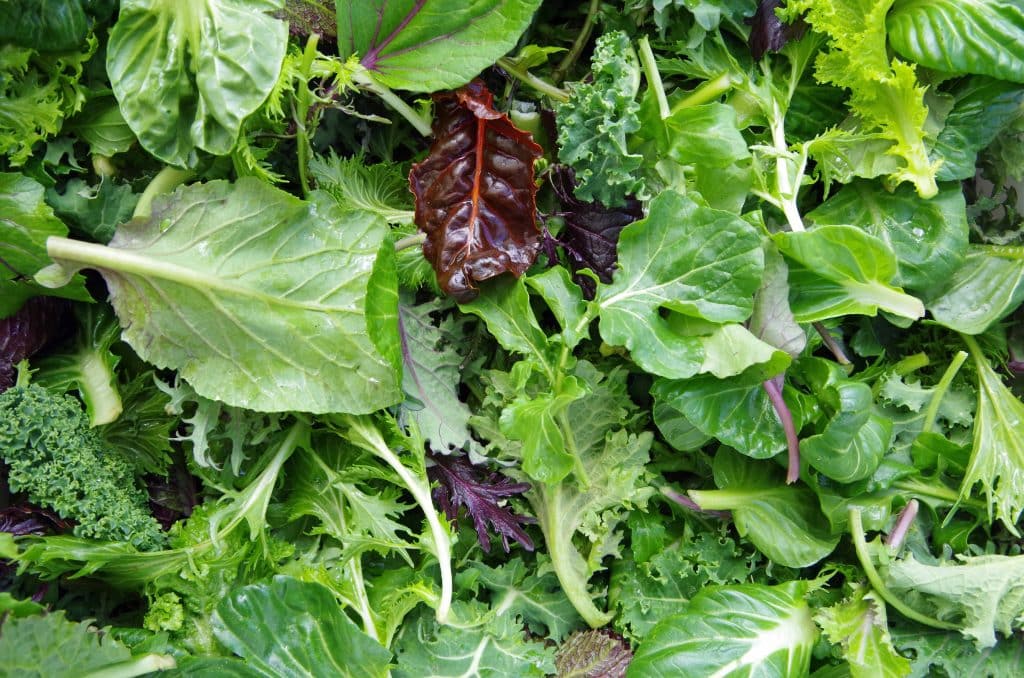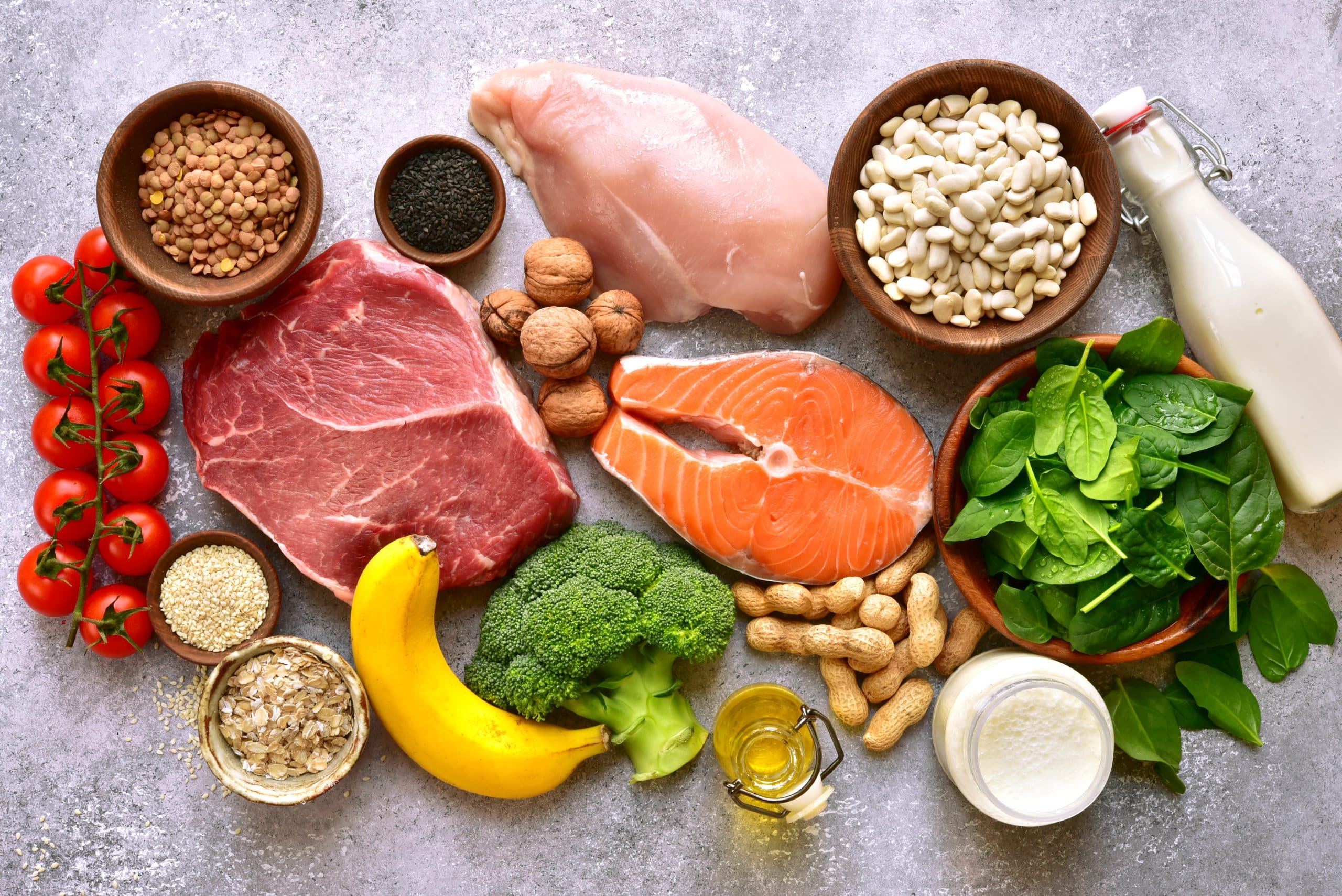A Healthy Diet – The Cellular Healing Diet
Consuming a healthy diet day in and day out is the foundation of good health. However, exactly what constitutes a healthy diet is still up for debate according to the experts. The reasons for this are multifold which include corporate interests, bought and paid-for scientific research, and blatant misinformation.
Fortunately, good nutrition isn’t complicated if we look at what our ancestors ate before modern-day farming practices took hold of the world. Specifically, homo sapiens have been hunters and gatherers for nearly our entire existence on this planet and it is only within the last 12,000 years that we have collectively converted over to an agriculture-based diet.1
As we began to include more diverse foods into our diet like whole grains and tubers, we were exposed to more plant toxins like phytic acid and phytates, resulting in negative health consequences.2 3 Our health only continues to get worse with the advent of highly processed foods as we have completely disconnected from nature.
The majority of the processed food that people consume is GMO Frankenstein food laden with rancid seed-based oils, chemical preservatives, sugar, or sugar substitutes, and sprinkled with glyphosate which is linked directly to many different health problems.4
Read more about the toxic effects of glyphosate.
The sad truth is that most people are out of shape and suffer from metabolic syndrome, other autoimmune diseases, and hormone dysfunction. Even worse, these people have no idea why they are suffering. Ultimately, diet is to blame for the greater majority of health problems society suffers from.
The Cellular Healing Diet
A healthy diet like my Cellular Healing Diet focuses on consuming high-quality fats that are necessary for cellular membrane function, moderate amounts of protein, and limited amounts of carbohydrates. Ultimately, this is what humans have eaten for eons when we were consuming most of our calories in the form of animal products.
A Healthy Diet – Grass-Fed Meat
The foundation of a healthy diet includes animal products like grass-fed meat, bone broth, and organ meats. For maximum benefit, it is essential to consume animals that have eaten a natural diet, not ones produced by commercial farms. These farms feed their livestock high quantities of corn and grains, antibiotics, growth hormones, and other chemicals that are intended to maximize profits.
Grass-fed meat is an excellent source of protein, vitamins, minerals, and healthy fats. It also contains essential fatty acids like omega-3s and conjugated linoleic acid (CLA) that are not found in grain-fed meats. Specifically, organic, grass-fed meat contains ideal concentrations of omega-3 and omega-6 fatty acids.5 Grain-fed meat has high concentrations of omega-6 fatty acids that have been linked with inflammation and other health issues.6
Grass-fed beef has been shown to have a higher level of antioxidants than grain-fed beef. Grass-fed meat is also higher in beta-carotene, iron, zinc, vitamin E, and some B vitamins than its grain-fed counterpart.5
Grass-fed meat can benefit health in a variety of ways. It has been linked to decreased inflammation and improved heart health, lower cholesterol levels, increased muscle mass, and better digestive health.7 8

A Healthy Diet – Fish Rich In The Omega-3 Fatty Acids DHA And EPA
Humans are designed to eat fish, as fish contains highly concentrated quantities of the omega-3 fatty acids EPA and DHA.9 Docosahexaenoic acid (DHA) and eicosapentaenoic acid (EPA) are essential fatty acids that play an important role in various functions of the brain.
Fish high in DHA and EPA are particularly beneficial. Some of the best sources include salmon, mackerel, sardines, herring, tuna, anchovies, trout, and whitefish. Eating these fish regularly ensures the consumption of adequate amounts of DHA and EPA.
The main function of EPA and DHA is to regulate cell membrane fluidity and flexibility, which is essential for cognitive function.10 This is why fatty fish is so essential for cellular membrane healing. EPA and DHA can help improve neurotransmitter activity, which is important for learning and memory. They also play an important role in reducing inflammation, which helps protect the brain from damage caused by free radicals.11
EPA and DHA have been studied extensively, particularly in relation to cognitive decline associated with aging. Studies have shown that consuming high concentrations of EPA and DHA can reduce the risk of cognitive decline and improve memory in older adults.12
Omega-3 fatty acids are particularly important during brain development in infants and children.13 Therefore, pregnant women and young children should focus on eating fish that is high in DHA and EPA.

EPA And DHA Counter Depression
EPA and DHA also have antidepressant effects, as they increase levels of serotonin, norepinephrine, and dopamine which are neurotransmitters involved in mood regulation. Additionally, EPA and DHA can help improve sleep, reduce stress levels, and enhance overall well-being. Overall, the research has shown that EPA and DHA are essential to maintaining healthy brain function.14
Healthy Fats
In addition to the fats found in grass-fed meat and fish, healthy fats like olive oil and coconut oil are foundational to cellular membrane health. Olive oil and coconut oil are two of the healthiest fats that can be included in the diet. Both oils contain essential fatty acids that promote healthy cholesterol levels and help protect against heart disease. Olive oil also contains polyphenols, powerful antioxidants that reduce inflammation and protect against chronic diseases.15 Coconut oil is high in lauric acid, which has antiviral and antibacterial properties that help boost the immune system.16

A Healthy Diet – Non-Starchy Vegetables
Non-starchy vegetables are a great way to get the essential vitamins, minerals, and dietary fiber needed for overall health. They are packed with nutrients and low in calories, so they are a great addition to any healthy diet. Non-starchy vegetables also provide important antioxidants that can help reduce inflammation and damage caused by free radicals. Examples of non-starchy vegetables include cruciferous vegetables like broccoli, cauliflower, and Brussels sprouts.17
Organic Leafy Greens
Leafy greens are some of the most nutrient-rich foods on Earth. These dark leafy veggies contain an array of vitamins, minerals, and antioxidants that help us stay healthy. Eating organic leafy greens is a great way to reduce exposure to pesticides and other contaminants, as well as boost our intake of fiber and key nutrients.
Kale, spinach, arugula, watercress, swiss chard, and collards are some of the most nutrient-rich leaves we can enjoy. Adding them to the diet is an easy way to get an array of vitamins and minerals, including vitamins A and K, iron, calcium, and magnesium. These essential nutrients are important for maintaining our joints, bones, and muscles as well as supporting healthy eyesight.18

Foods To Be Consumed In Moderation
While not completely necessary, there are certain foods that can be added to the diet in moderation to increase variety. These foods include vegetables higher in starch, grass-fed dairy products, beans, lentils, nuts, and seeds, as well as low-glycemic fruits. Healthy treats like dark chocolate may also be enjoyed occasionally.
A Healthy Diet – Starchy Vegetables
Starchy vegetables are a nice inclusion to a healthy diet. Starchy veggies include potatoes, yams, and squash. They provide essential vitamins and minerals that help keep us healthy. They also contain fiber which helps to reduce cholesterol and keep our digestive system running smoothly.19
A Healthy Diet – Grass-Fed Dairy
Eating grass-fed dairy products in moderation is a great way to improve our diet, as they contain much higher levels of beneficial nutrients than conventional dairy products. Grass-fed cows produce milk that is enriched with important vitamins and minerals such as vitamin A, vitamin D, iron, zinc, and omega-3 fatty acids.20 All of these nutrients are essential for a healthy body and mind.

A Healthy Diet – Beans And Lentils
Beans and lentils are a fantastic source of plant-based protein, fiber, and micronutrients. As part of a healthy diet, they can help to reduce cholesterol levels, regulate blood sugar, and aid digestion. Beans such as black beans, chickpeas, and kidney beans are packed with antioxidants and contain essential vitamins such as folate and iron.
Lentils are an excellent source of magnesium, zinc, and phosphorus. Beans and lentils make a nutrient-dense meal that is both delicious and filling.21
A Healthy Diet – Nuts And Seeds
Nuts and seeds are an important part of a healthy diet. They provide essential vitamins and minerals such as vitamin E, folate, potassium, magnesium, and fiber. Eating nuts and seeds can also help lower cholesterol levels, reduce heart disease risk, regulate blood sugar levels, and improve digestion.22
Furthermore, they contain plant-based proteins and healthy fats which can help us feel fuller for longer and aid in weight management. Some popular examples of nuts and seeds include almonds, walnuts, cashews, sunflower seeds, pumpkin seeds, pecans, sesame seeds, flaxseeds, and chia seeds.
Learn more about maintaining a healthy weight.
A Healthy Diet – Low-Glycemic Fruits
Fruits are an important part of a healthy diet. While some fruits contain high amounts of sugar, there are plenty of low-glycemic options to choose from which can help keep blood sugar levels stable throughout the day.23 Low-glycemic fruits include apples, cherries, peaches, pears, grapefruit, oranges, and apricots.
Also, don’t forget about avocados, as they are a great addition to a healthy diet. Avocados contain high levels of monounsaturated and polyunsaturated fats, which can help lower cholesterol and triglycerides. Avocados also provide important vitamins such as vitamin K, folate, and vitamin C, as well as dietary fiber.24
A Healthy Diet – Dark Chocolate
Dark chocolate has been proven to have some amazing health benefits. Dark chocolate contains flavonoids which are known to reduce the risk of certain diseases, improve blood circulation, and lower blood pressure. Eating small amounts of dark chocolate regularly can help maintain cardiovascular health. It is also packed with antioxidants and minerals, such as magnesium, copper, iron, and zinc.25
Dark chocolate contains anandamide, a compound known as “the bliss molecule.” Anandamide is responsible for providing a feeling of well-being and can enhance mood.26

A Healthy Diet – The Cellular Healing Diet
At the end of the day, your health is in your own hands. By choosing to eat a healthy diet like my Cellular Healing Diet you will give your body exactly what it needs without subjecting it to commercial poisons that are contained in processed foods. Your journey to good health starts at this most basic level, as we really are what we eat.
References
1 The Development of Agriculture. (2023). https://education.nationalgeographic.org/resource/development-agriculture/
2 J. Physiol. (I949) I09, 488-533 547.593:6I2.751.I THE RICKETS-PRODUCING AND ANTI-CALCIFYING ACTION OF PHYTATE BY EDWARD MELLANBY
3 Phytase of Wheat F.G. PEERS, The Biochemical Journal Vol. 53, NO, 1 pp. 102-110, 1953
4 Soares D, Silva L, Duarte S, Pena A, Pereira A. Glyphosate Use, Toxicity and Occurrence in Food. Foods. 2021 Nov 12;10(11):2785. doi: 10.3390/foods10112785. PMID: 34829065; PMCID: PMC8622992.
5 Daley CA, Abbott A, Doyle PS, Nader GA, Larson S. A review of fatty acid profiles and antioxidant content in grass-fed and grain-fed beef. Nutr J. 2010 Mar 10;9:10. doi: 10.1186/1475-2891-9-10. PMID: 20219103; PMCID: PMC2846864.
6 Innes JK, Calder PC. Omega-6 fatty acids and inflammation. Prostaglandins Leukot Essent Fatty Acids. 2018 May;132:41-48. doi: 10.1016/j.plefa.2018.03.004. Epub 2018 Mar 22. PMID: 29610056.
7 Nogoy KMC, Sun B, Shin S, Lee Y, Zi Li X, Choi SH, Park S. Fatty Acid Composition of Grain- and Grass-Fed Beef and Their Nutritional Value and Health Implication. Food Sci Anim Resour. 2022 Jan;42(1):18-33. doi: 10.5851/kosfa.2021.e73. Epub 2022 Jan 1. PMID: 35028571; PMCID: PMC8728510.
8 WebMD Editorial Contributors. (2020, October 5). Grass-Fed Beef: Is It Good for You? WebMD. https://www.webmd.com/diet/grass-fed-beef-good-for-you
9 Office of Dietary Supplements – Omega-3 Fatty Acids. (2022). https://ods.od.nih.gov/factsheets/Omega3FattyAcids-Consumer/
10 Sherratt SCR, Juliano RA, Copland C, Bhatt DL, Libby P, Mason RP. EPA and DHA containing phospholipids have contrasting effects on membrane structure. J Lipid Res. 2021;62:100106. doi: 10.1016/j.jlr.2021.100106. Epub 2021 Aug 13. PMID: 34400132; PMCID: PMC8430377.
11 von Schacky C. Importance of EPA and DHA Blood Levels in Brain Structure and Function. Nutrients. 2021 Mar 25;13(4):1074. doi: 10.3390/nu13041074. PMID: 33806218; PMCID: PMC8066148.
12 So J, Wu D, Lichtenstein AH, Tai AK, Matthan NR, Maddipati KR, Lamon-Fava S. EPA and DHA differentially modulate monocyte inflammatory response in subjects with chronic inflammation in part via plasma specialized pro-resolving lipid mediators: A randomized, double-blind, crossover study. Atherosclerosis. 2021 Jan;316:90-98. doi: 10.1016/j.atherosclerosis.2020.11.018. Epub 2020 Dec 7. PMID: 33303222.
13 Innis SM. Dietary omega 3 fatty acids and the developing brain. Brain Res. 2008 Oct 27;1237:35-43. doi: 10.1016/j.brainres.2008.08.078. Epub 2008 Sep 9. PMID: 18789910.
14 Liao Y, Xie B, Zhang H, He Q, Guo L, Subramanieapillai M, Fan B, Lu C, McIntyre RS. Efficacy of omega-3 PUFAs in depression: A meta-analysis. Transl Psychiatry. 2019 Aug 5;9(1):190. doi: 10.1038/s41398-019-0515-5. Erratum in: Transl Psychiatry. 2021 Sep 7;11(1):465. PMID: 31383846; PMCID: PMC6683166.
15 Foscolou A, Critselis E, Panagiotakos D. Olive oil consumption and human health: A narrative review. Maturitas. 2018 Dec;118:60-66. doi: 10.1016/j.maturitas.2018.10.013. Epub 2018 Oct 26. PMID: 30415757.
16 Joshi S, Kaushik V, Gode V, Mhaskar S. Coconut Oil and Immunity: What do we really know about it so far? J Assoc Physicians India. 2020 Jul;68(7):67-72. PMID: 32602684.
17 López-Chillón MT, Carazo-Díaz C, Prieto-Merino D, Zafrilla P, Moreno DA, Villaño D. Effects of long-term consumption of broccoli sprouts on inflammatory markers in overweight subjects. Clin Nutr. 2019 Apr;38(2):745-752. doi: 10.1016/j.clnu.2018.03.006. Epub 2018 Mar 13. PMID: 29573889.
18 Stuetz W, Gowele V, Kinabo J, Bundala N, Mbwana H, Rybak C, Eleraky L, Lambert C, Biesalski HK. Consumption of Dark Green Leafy Vegetables Predicts Vitamin A and Iron Intake and Status among Female Small-Scale Farmers in Tanzania. Nutrients. 2019 May 7;11(5):1025. doi: 10.3390/nu11051025. PMID: 31067775; PMCID: PMC6567817.
19 Feng R, Du S, Chen Y, Zheng S, Zhang W, Na G, Li Y, Sun C. High carbohydrate intake from starchy foods is positively associated with metabolic disorders: a Cohort Study from a Chinese population. Sci Rep. 2015 Nov 19;5:16919. doi: 10.1038/srep16919. PMID: 26581652; PMCID: PMC4652281.
20 Hebeisen DF, Hoeflin F, Reusch HP, Junker E, Lauterburg BH. Increased concentrations of omega-3 fatty acids in milk and platelet rich plasma of grass-fed cows. Int J Vitam Nutr Res. 1993;63(3):229-33. PMID: 7905466.
21 Bouchenak M, Lamri-Senhadji M. Nutritional quality of legumes, and their role in cardiometabolic risk prevention: a review. J Med Food. 2013 Mar;16(3):185-98. doi: 10.1089/jmf.2011.0238. Epub 2013 Feb 11. PMID: 23398387.
22 Balakrishna R, Bjørnerud T, Bemanian M, Aune D, Fadnes LT. Consumption of Nuts and Seeds and Health Outcomes Including Cardiovascular Disease, Diabetes and Metabolic Disease, Cancer, and Mortality: An Umbrella Review. Adv Nutr. 2022 Dec 22;13(6):2136-2148. doi: 10.1093/advances/nmac077. PMID: 36041171; PMCID: PMC9776667.
23 Jenkins DJ, Srichaikul K, Kendall CW, Sievenpiper JL, Abdulnour S, Mirrahimi A, Meneses C, Nishi S, He X, Lee S, So YT, Esfahani A, Mitchell S, Parker TL, Vidgen E, Josse RG, Leiter LA. The relation of low glycaemic index fruit consumption to glycaemic control and risk factors for coronary heart disease in type 2 diabetes. Diabetologia. 2011 Feb;54(2):271-9. doi: 10.1007/s00125-010-1927-1. Epub 2010 Oct 27. PMID: 20978741; PMCID: PMC3017317.
24 Dreher ML, Cheng FW, Ford NA. A Comprehensive Review of Hass Avocado Clinical Trials, Observational Studies, and Biological Mechanisms. Nutrients. 2021 Dec 7;13(12):4376. doi: 10.3390/nu13124376. PMID: 34959933; PMCID: PMC8705026.
25 Kerimi A, Williamson G. The cardiovascular benefits of dark chocolate. Vascul Pharmacol. 2015 Aug;71:11-5. doi: 10.1016/j.vph.2015.05.011. Epub 2015 May 27. PMID: 26026398.
26 Nehlig A. The neuroprotective effects of cocoa flavanol and its influence on cognitive performance. Br J Clin Pharmacol. 2013 Mar;75(3):716-27. doi: 10.1111/j.1365-2125.2012.04378.x. PMID: 22775434; PMCID: PMC3575938.









